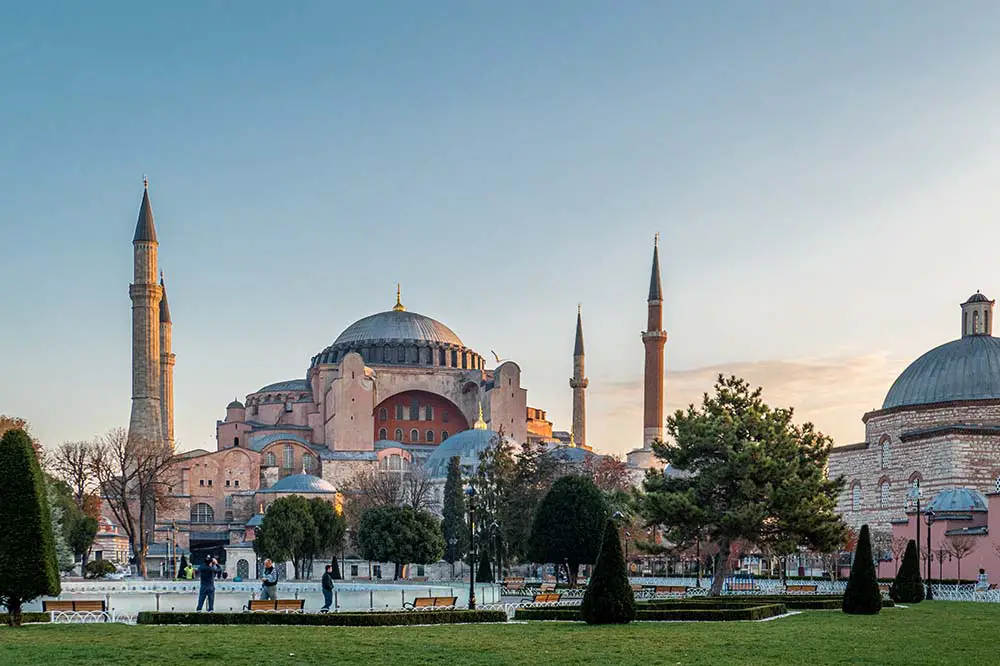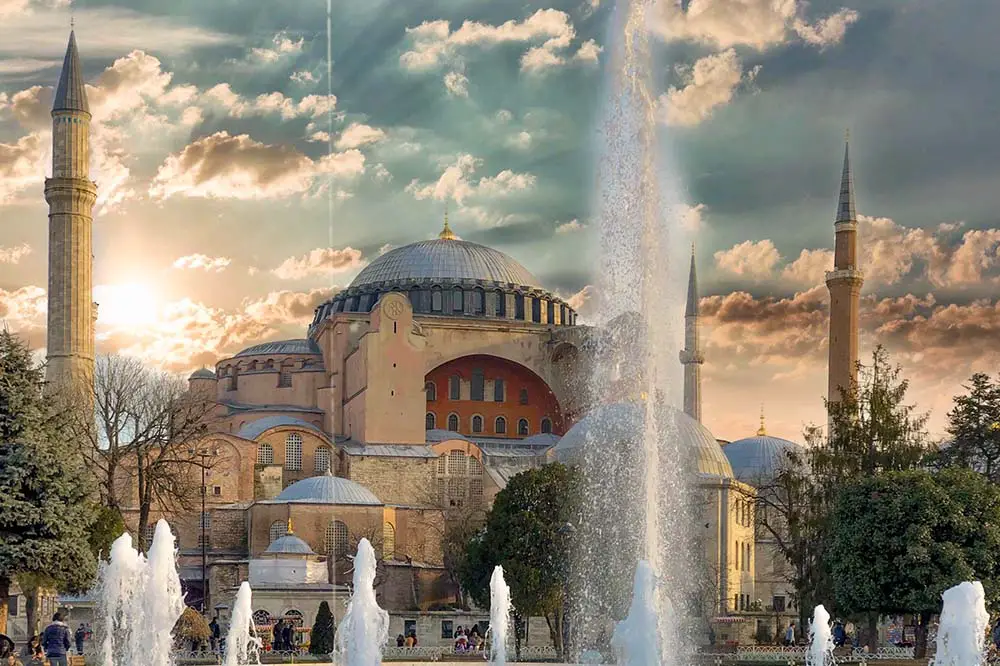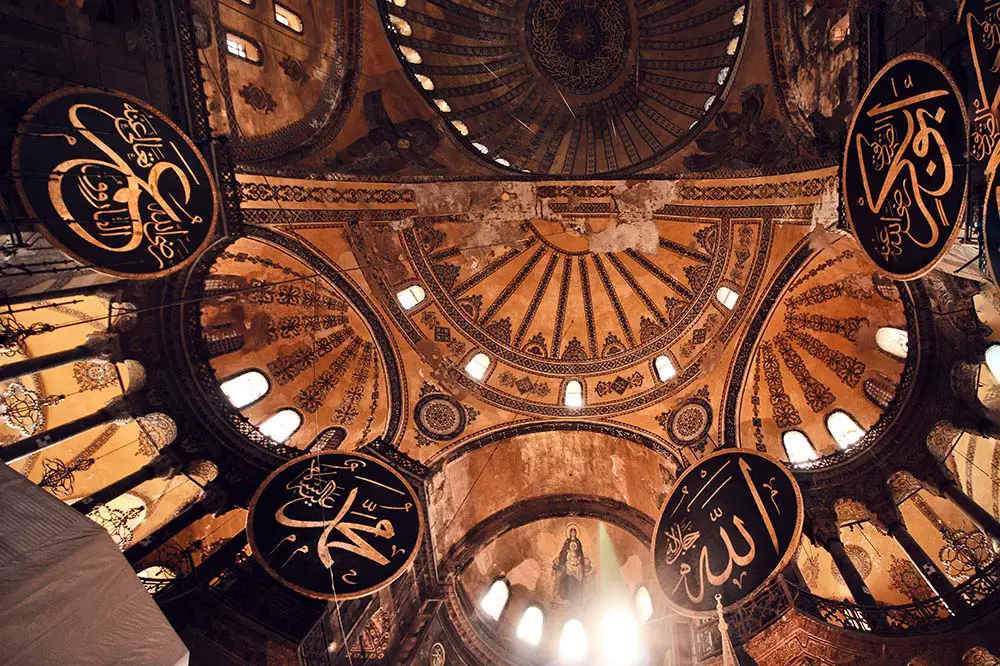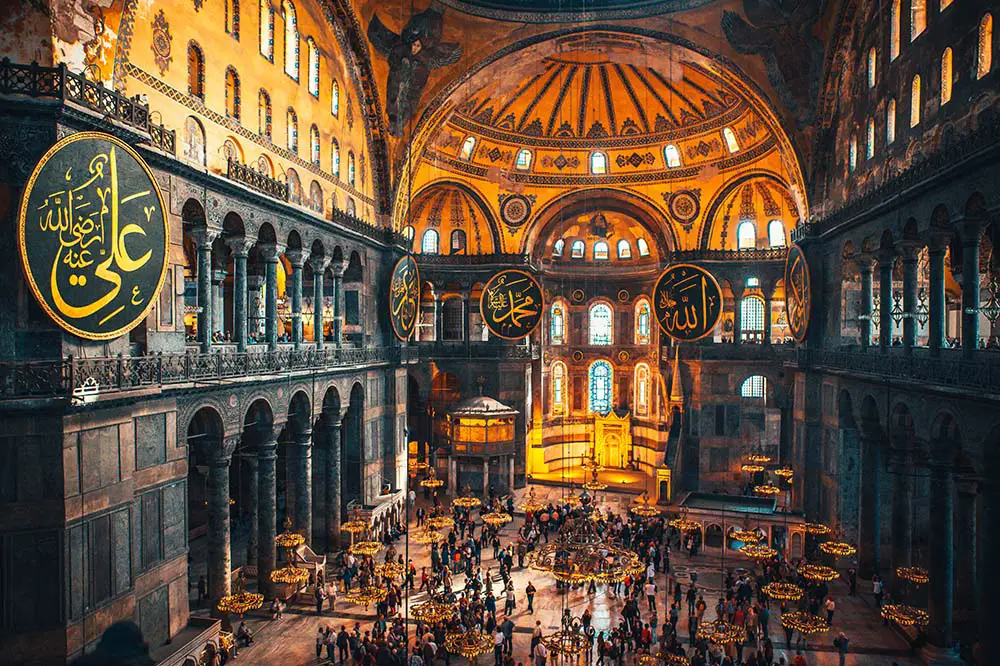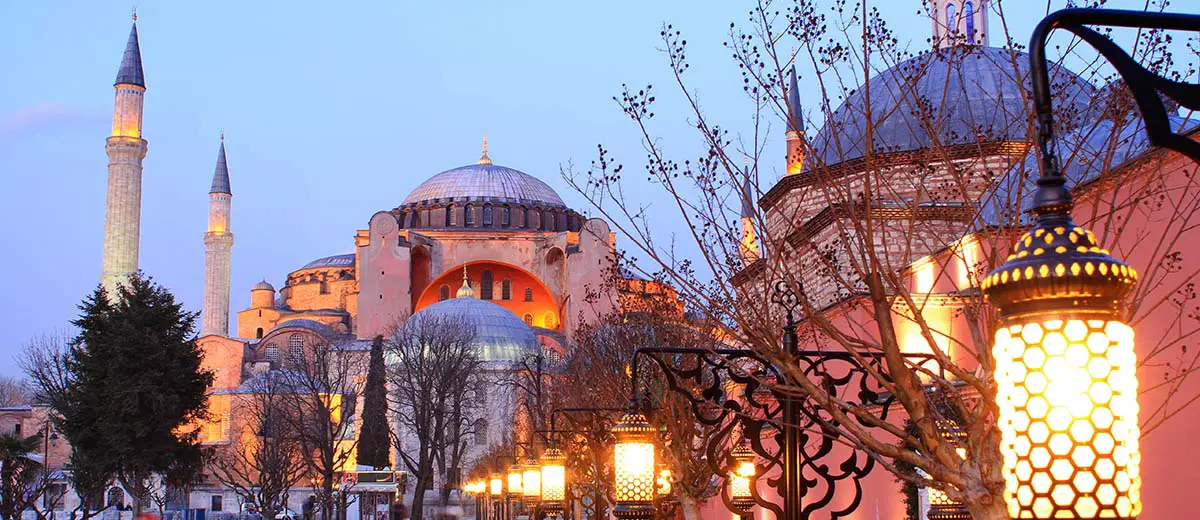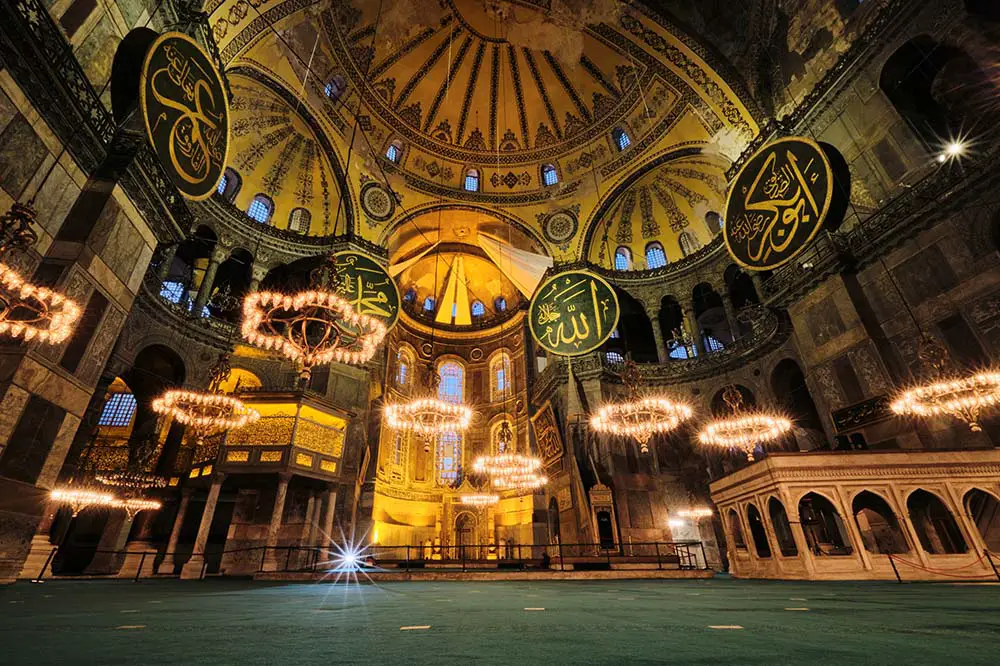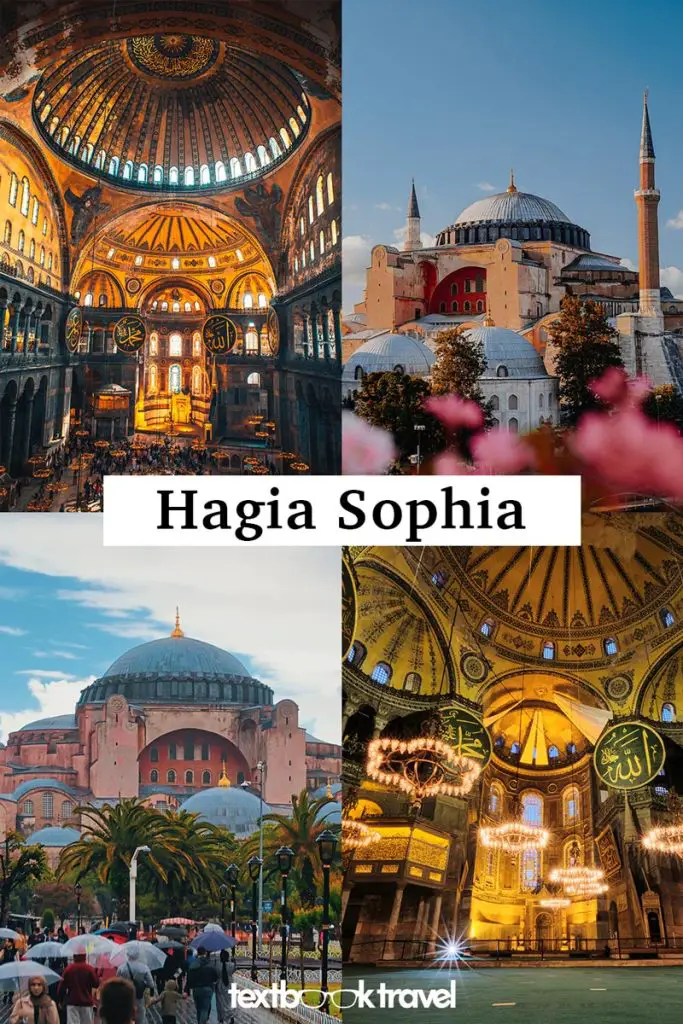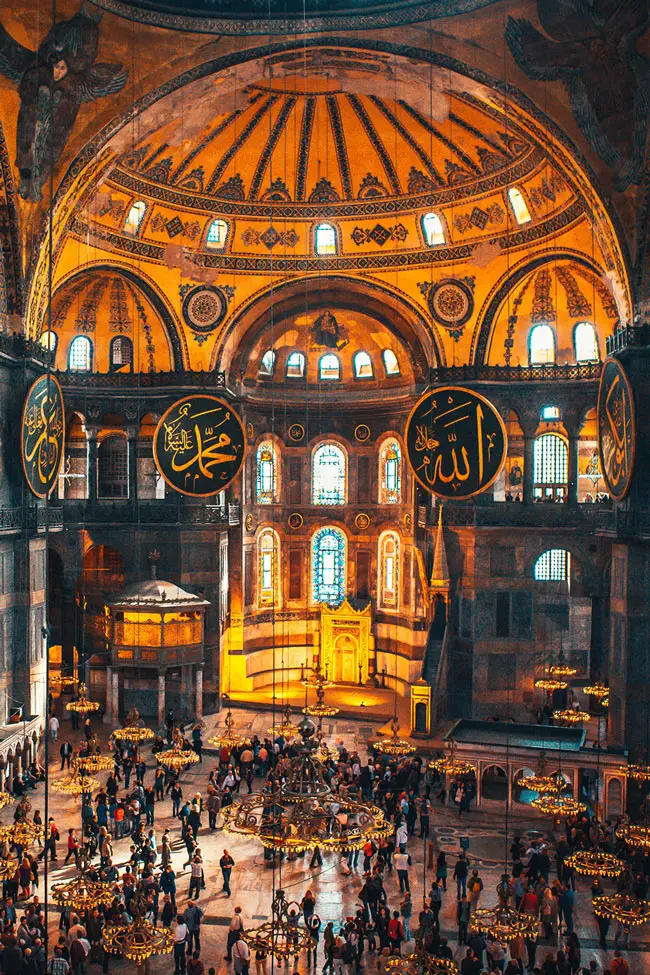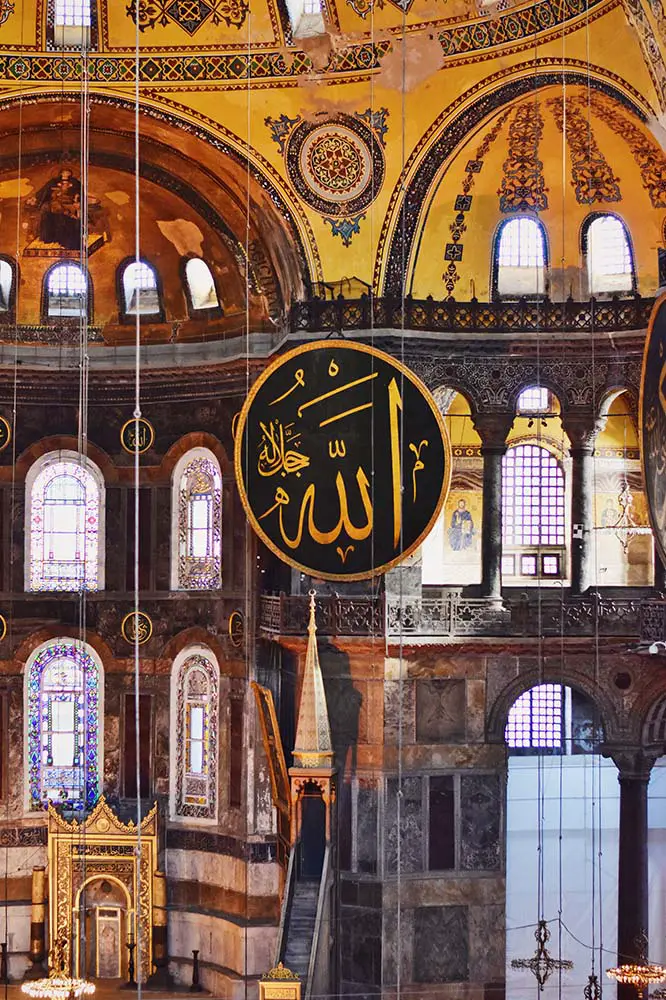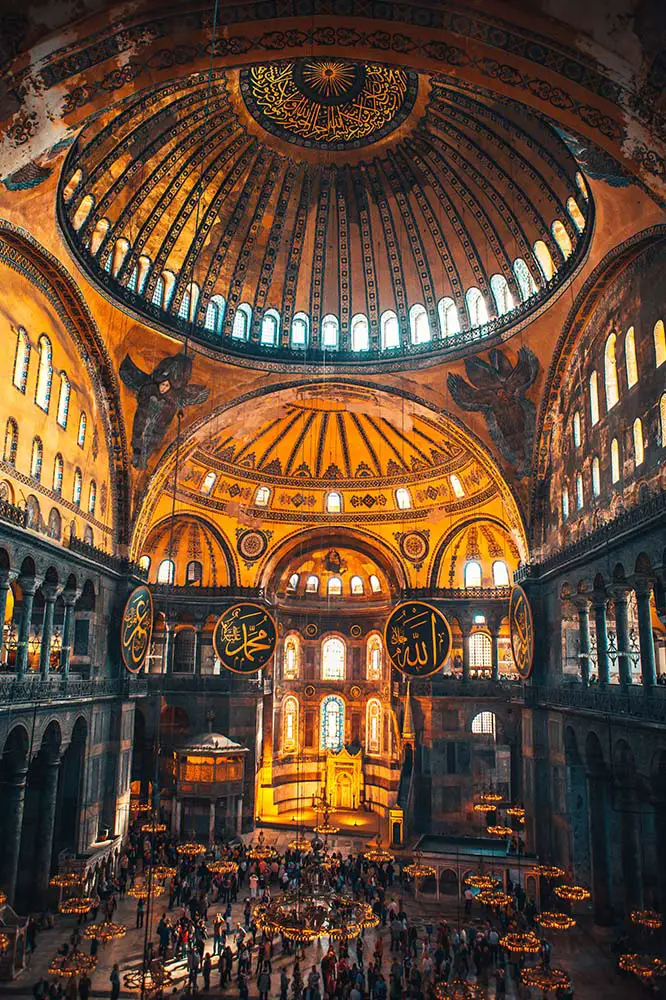Hagia Sophia | Byzantine Empire, 537 AD
In 313 AD the Roman Emperor Constantine adopted Christianity as the official religion of his empire. Then, after many years of dominance, the Roman Empire would become too large to handle and split into the Western Roman Empire and its eastern counterpart known as the Byzantine Empire. The territory of the Byzantines would fluctuate greatly over the following centuries and they would eventually fall to the Ottomans roughly 1000 years later in 1453 AD.
Left: Raimond Klavins on Unsplash & Right: Halil Ibrahim Cetinkaya on Unsplash
Constantinople—known today as Istanbul—exhibits some of the finest examples of Byzantine Architecture including the Church of Hagia Eirene and the Hagia Sophia. After its initial construction in 360 AD and a series of fires, the Byzantines built the iconic structure that stands today in 537 and for over 900 years it stood as one of the largest and most important churches of Orthodox Christianity. It was then converted into a mosque by the Ottomans after the fall of Constantinople.
Excuse me! Are you on Pinterest?! Here are a couple of pins! Right: Raimond Klavins on Unsplash
Gallery
This post is part of an expanded series taken from 37 Wonders of the World in Chronological Order. You can click the link to read more, watch the video or navigate between individual posts beneath the gallery. Enjoy!
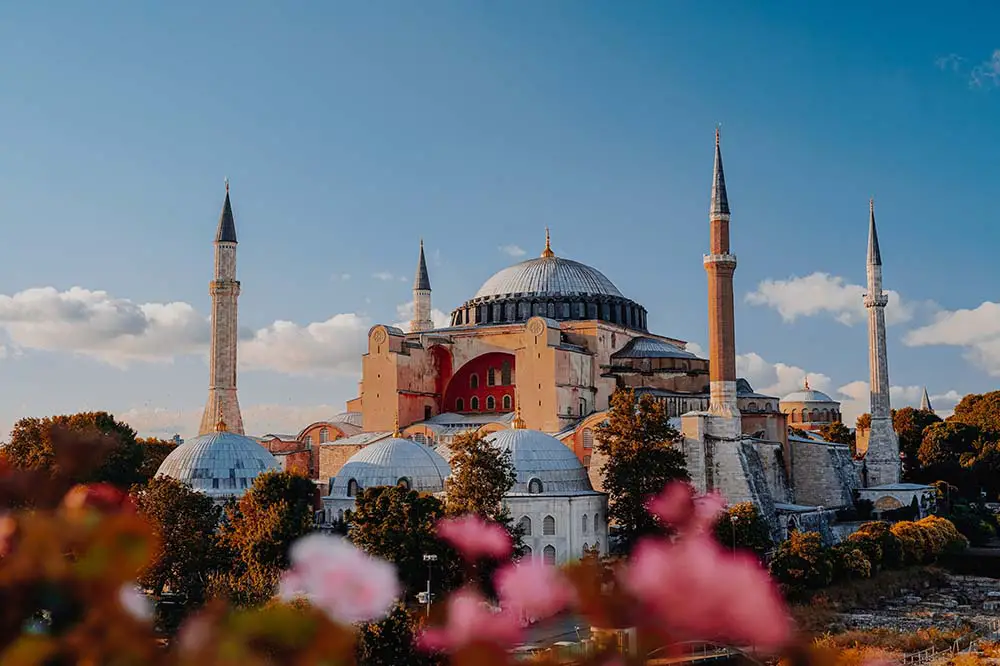
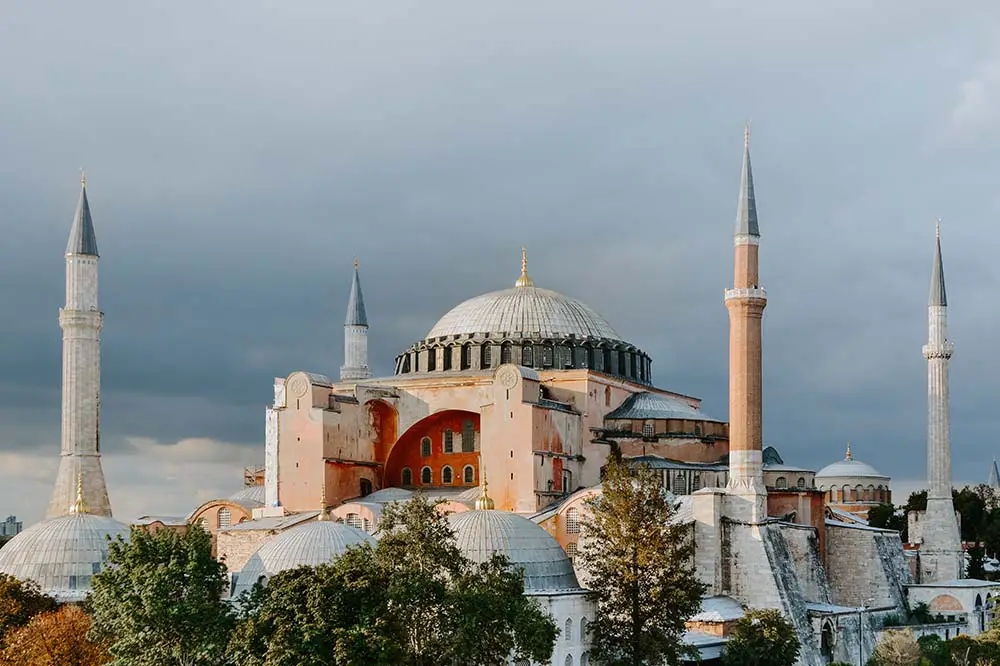
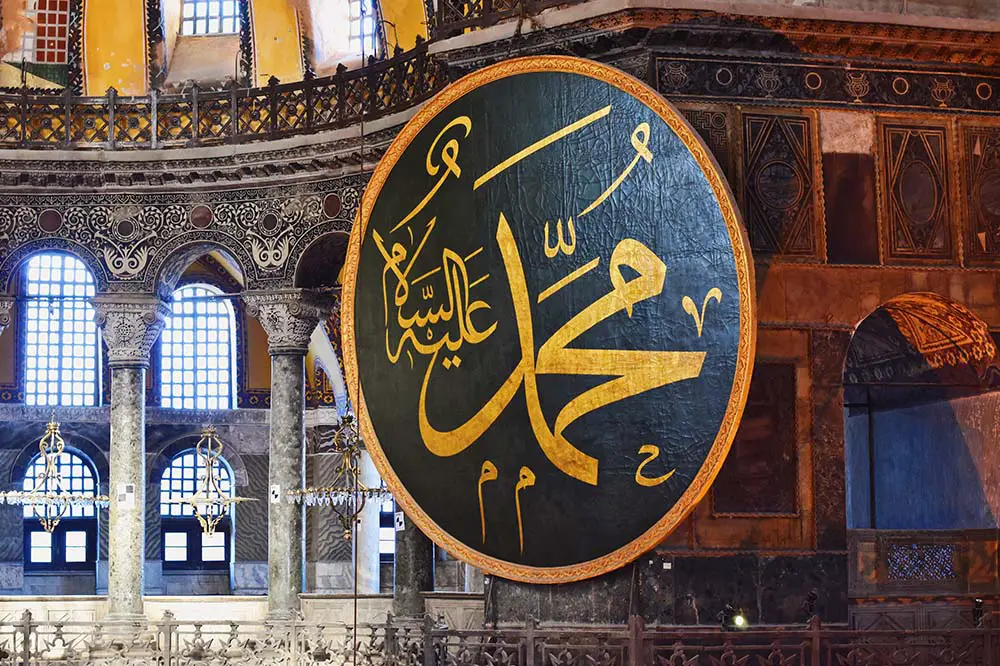
Left: Rumman Amin on Unsplash & Right: Raimond Klavins on Unsplash
